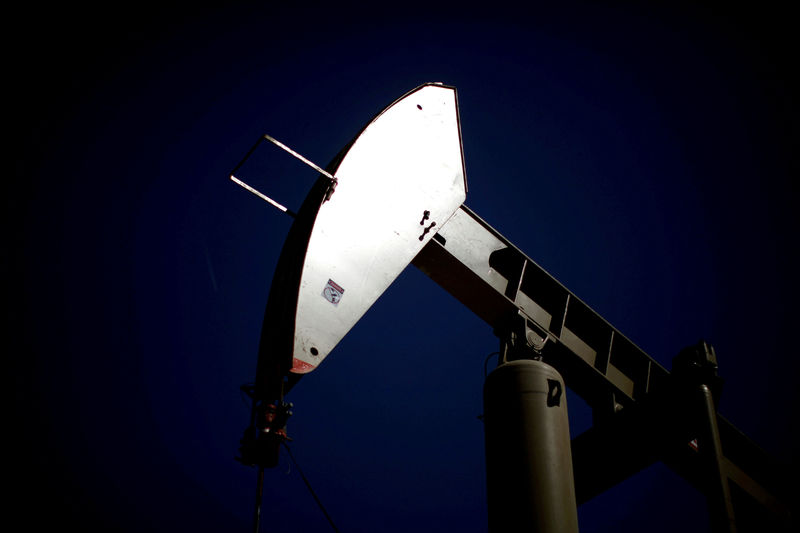By Ernest Scheyder
HOUSTON (Reuters) - Financiers keep pouring cash into the shale oil sector, providing producers with a path to keep U.S. output rising through the middle of the next decade.
The United States is on track to deliver up to 80 percent of the world's oil production gains through 2025, the International Energy Agency estimates, increases fuelled in part by easy access to capital. Rising U.S. production is undermining OPEC's attempts to curb global supply and boost prices, forcing the oil cartel to continue restraining output through the end of 2018.
Hedge funds and private equity firms have given producers a range of new and traditional financial levers they can pull as needed to keep shale rigs drilling, according to interviews with more than a dozen financiers, advisers and executives. The money continues to flow despite rising pressure from some investors for drillers to prioritise better profit margins over expanded production.
Producers holding land in prime fields with oil trapped in shale rock are having little trouble financing their fracking projects, said Buddy Clark, co-chairman of the energy practice group at Haynes Boone law firm in Houston.
"If you've got the rocks, you can get the money," he said.
The IEA predicts U.S. shale oil output, now about 6.17 million barrels per day (bpd), will rise another 8 million bpd by 2025. That would turn the world's largest oil-consuming nation into a net exporter of oil. The United States already is a net exporter of natural gas.
Through the third quarter of this year, private equity firms have put $20.26 billion into energy-related deals, 36 percent more than all of last year, according to financial data provider Preqin. Initial stock offerings for U.S.-listed oil and gas firms raised $2.93 billion this year, up from $1.52 billion in 2016, according to Thomson Reuters data.
Another way to finance drilling - production hedging, or contracts producers use to lock in prices on future output - also is on the rise this year. Hedging acts as insurance against price drops, letting producers drill with more certainty they can earn a profit.
Forty midsize producers tracked by researcher PetroNerds LLC hedged 45 percent of their production in the third quarter, up from 36.5 percent a year earlier. Those same companies boosted capital spending by nearly two-thirds this year.
RISING OUTPUT, SPENDING
In response to investor pressure for better profits, producers are touting efficiencies from newer well designs and their efforts to shed less productive shale acreage as evidence that they can lift returns and output at the same time.
A 39 percent increase in crude prices since June also has helped shale producers deliver better returns while boosting spending. ConocoPhillips (NYSE:COP) - which has sold properties in the Canadian oil sands, along with less profitable shale holdings - recently said that its capital budgets from 2018 to 2020 will average $5.5 billion annually, up from about $4.5 billion this year, because of higher production and cash flow.
"This is not a supply source that is going away any time soon," said Ryan Lance, Conoco's chief executive, in a recent interview.
The rising investment marks a reversal from the period following the 2014 oil price collapse, which triggered scores of oil-firm bankruptcies and caused banks to abruptly pull back on lending to oil and gas producers. In their place, private equity firms, hedge funds and others have added to investments and unleashed new ways to finance drilling.
"You've seen this marriage of necessity between private equity and independent producers needing to drill acreage," said Hillary Holmes of Gibson Dunn, a Houston law firm specializing in energy finance.
The retreat of banks and other lenders opened "a finance vacuum that we're looking to fill," said Mark Stoner, a partner at Houston private equity fund Bayou City Energy, which has financed about 80 new shale wells since last year.
One innovation that emerged is DrillCos, which allow investors to finance new wells and control their cash flow for a few years until double-digit rates of return are met. Such partnerships have contributed at least $2 billion to producers since 2015.
DrillCos' potential for returns of about 15 percent have been a hit with investors looking for alternatives to other short-term investments with lower payouts.
"Folks are dying for yield," said Sharam Honari, a partner with hedge fund BlackGold Capital Management, which invests in energy companies. "They are doing what it takes to find that yield."
Other financing vehicles replacing bank financing for shale firms include so-called SPACs - special purpose acquisition companies - and infrastructure partnerships that allow producers to tap pipeline and storage operations for cash. SPACs raise money in equity markets by selling investors on the reputation of their veteran managers, then they go hunting for oil firms to acquire.
The success of such financing vehicles has helped them spread. The first non-U.S. SPAC recently raised $650 million to pursue energy deals in Mexico.
SCEPTICISM FROM OPEC
OPEC officials last month played down the capabilities of shale producers even as the oil cartel agreed to extend production cuts in response to strong U.S. oil output. Forecasts of rapid production growth also have been challenged by shale producers, such as Continental Resources Inc, and oilfield services giant Schlumberger NV (NYSE:SLB).
Pointing to studies of the rapid decline in shale-well output over time and the dangers of ever-longer horizontal shale wells, Schlumberger Executive Vice President Patrick Schorn earlier this month told investors: "The ability of tight (shale) oil to influence global supply dynamics, and therefore price, will diminish over time."
The shale sector's resilience has been tested before, and firms have adapted to lower prices by using new technologies and financing vehicles, said Charlie Leykum, founder of private equity fund CSL Capital Management LLC, which has invested in and started several oilfield service companies.

"The upstream industry has been really creative in how it pursues financing of late," he said.